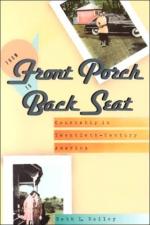
|
| Name: _________________________ | Period: ___________________ |
This test consists of 5 multiple choice questions, 5 short answer questions, and 10 short essay questions.
Multiple Choice Questions
1. According to the author in Chapter 2, "The Economy of Dating,” many treated going steady as what?
(a) Play-marriage.
(b) An overwhelming endeavor.
(c) Engagement.
(d) An excuse to have sex.
2. According to the author in Chapter 2, "The Economy of Dating,” the most popular students went steady, while others tried to avoid being what?
(a) Square.
(b) Broke.
(c) Different.
(d) Noticed.
3. According to the author in Chapter 2, "The Economy of Dating,” after World War II dating was still a way to demonstrate what?
(a) Popularity.
(b) Manners.
(c) Wealth.
(d) Breeding.
4. In what year was Beth Bailey a senior in college?
(a) 1965.
(b) 1954.
(c) 1978.
(d) 1972.
5. The protocol for going steady was strict and often involved what, according to the author in Chapter 2, "The Economy of Dating”?
(a) Written vows.
(b) The church’s blessing.
(c) A visible token.
(d) Life and death experiences.
Short Answer Questions
1. What courtship events does the author describe in colleges in Chapter 3, "The Worth of a Date”?
2. According to the author in Chapter 3, "The Worth of a Date,” American dating emerged as what became central to courtship?
3. In what decade did the Great Depression begin?
4. When she appeared on television during her senior year in college, Beth Bailey stated that love was more than what?
5. According to the author in Chapter 3, "The Worth of a Date,” American public culture since the 1920s reiterated that women should compete for men by doing what?
Short Essay Questions
1. How did American men view their coeds on college campuses after returning from World War II?
2. How did the emergence of dating change the values of consumption, according to the author in the Introduction?
3. How did the demographics of the sexes change during World War II? How did this affect courtship?
4. How does the author describe the system of dating as a public one in the Introduction?
5. What defined popularity in the world of courtship after World War II?
6. How did marriage change in the 1950s and 1960s? How was marriage related to consumption?
7. What did Beth Bailey and her fellow discussants state about the transformation of courtship when she appeared on television in the 1970s?
8. The transition to dating as a courtship ritual emerged to accommodate what, according to the author in Chapter 2, "The Economy of Dating"?
9. To what demographic does Beth Bailey align the system of dating in the Introduction?
10. How did those in the upper classes view the dating culture of the lower classes, according to the author in Chapter 1, "Calling Cards and Money"?
|
This section contains 823 words (approx. 3 pages at 300 words per page) |

|




